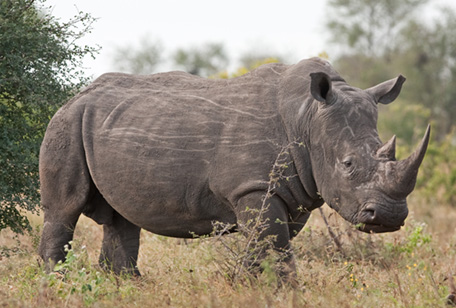
Ceratotherium simum
South Africa, Namibia, Zimbabwe and Kenya
Near Threatened
Name Origin
You may have noticed that despite their name, white rhinos aren’t actually white in color! The name “white rhino” comes from the Afrikaan’s word “weit” or “wyd” (meaning “wide”), referring to the animal’s wide, square lip. Early English settlers misinterpreted this for word for “white”, and the name stuck!
Not a True Horn
A rhino’s horn is not a true horn; True horns are attached to an animal’s skull and have a boney core. Rhino horns grow from the skin, and are made up of keratin fibers. This is the same material as your hair and fingernails! White rhino have two of these horns, with the front larger horn measuring anywhere from 37” to 79”. Unfortunately, these horns are highly sought after, and are the main reason this animal was nearly poached to extinction.
To learn more, download the Southern White Rhino fact sheet.
